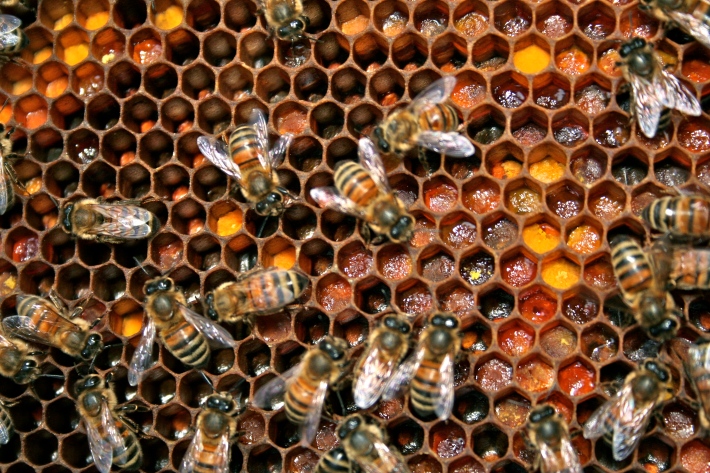Hello All!
So…I know, it’s been a while. Like, 7 months, a while. Life got in the way, etc etc. Also, there wasn’t anything too terribly exciting going on with the bees, just getting them ready for winter. But that’s enough about that, let’s get on with filling in the last 7 months!
Last we left off we had just completed our first honey harvest! Oh how sweet it was! After the July honey harvest, we left the bees more to themselves. We let them keep the rest of the honey as we made our inevitable descent into Autumn (I’m not a fan, can you tell?). We treated our bees to prevent Nosema…Imagine thousands of bees with dysentery, stuck inside a small hive with nowhere to fly. It’s pretty nasty, and can be a bee-killer as it will weaken the hive over the winter often to the point that the hive can no longer support itself and dies out.
Winter Dead Outs. In recent winters, it has become more and more a beekeepers worst nightmare. There’s no one cause for a hive to not make it through the winter. Aside from all the many many types of pests and diseases that can weaken a colony, like Nosema, there are several other factors. Not prepping the hive with proper ventilation in time for winter can cause moisture build-up on the inside cover of the hive. Cold, wet bees are not happy or healthy bees and do not last long. Ventilation is key. The next two issues are actually brought on mostly by the extremely mild winter we’ve had here in Boston. It has been lovely for us humans, but has wrecked havoc on the bees’ poor internal seasonal clock.
Both hives tried to swarm in September. That would have been a suicide mission for them, but thankfully we managed to avoid it with some good advice and lots of luck. When a hive swarms, it takes 1/2 to 2/3 of the mature, working bees as well as the queen, and flies off to a new place to make a new hive. The swarm takes much of the honey stores, and bee bodies necessary to keep a hive warm in the winter months. Not enough bees means they can’t cluster for warmth. That means death. There were many beekeepers in our area who unfortunately were unable to prevent these very late-season suicide missions. These swarms most often are in May/June and give both the swarm and the hive left behind time to build up population and stores before winter. Warm fall=above average number of swarms.
Next problem with mild winters: Starvation. Each of our hives went into the fall with 80 pounds of honey! Generally, a queen stops laying eggs in Oct/Nov and the bees cluster (and consume little food) until Feb/March when the queen resumes laying. Normally, 80 pounds would be considered conservative for winter honey stores around Boston, but this winter wasn’t normal. We believe our queen laid eggs well into December (if she even stopped then!) and has definitely started laying as of early-mid February. In addition, with 60% of this winter having daily temperatures over 45 degrees, that was 60% more time our bees were NOT in cluster, consuming less food. They were up and flying around, and we saw them flying around quite often in December, January, and February. They were out and about just two days ago! So, far more activity means more consumption. We started feeding our bees (homemade fondant) 3 weeks ago because they would have starved otherwise. For other beekeepers in the area who were less conservative with honey stores, they’ve had starvation problems.
Putting all this death and gloom aside, our bees are still alive (knock on wood)! We’ve seen quite a bit of them, and they appear to be happy and healthy. They continue to eat the fondant at a good pace, which means the queen may already be laying eggs. Since our hives appear to be very strong (we’ll have a better idea when we get to inspect the hives in April), we plan on splitting them in the Spring. As they will likely try and swarm come Springtime, we are doing a sort of ‘controlled’ swarm for them, by taking the queen and some of the bees and putting them into a new hive. They feel less crowded and don’t need to swarm, and we get more (free) hives! If all goes well, we will have four hives this year! Honey honey honey!!
So now the preparation has begun again. We ordered more woodenware for the two new hives and must assemble and paint. I won’t make you sit through that boring process, so instead, here are some lovely pictures I took last August/September!



